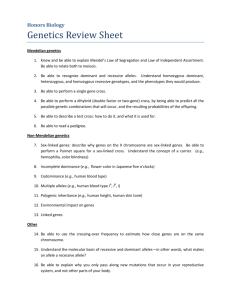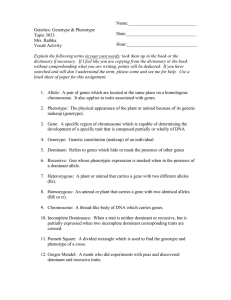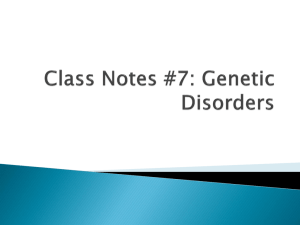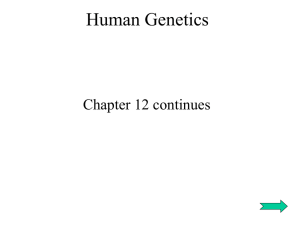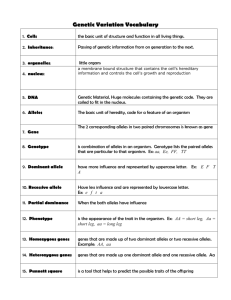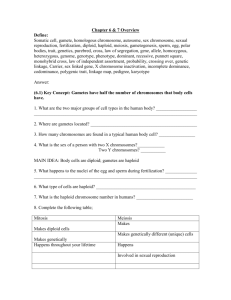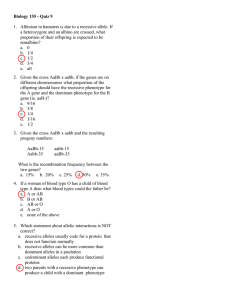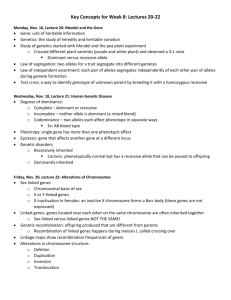Genetics notes for makeup
advertisement
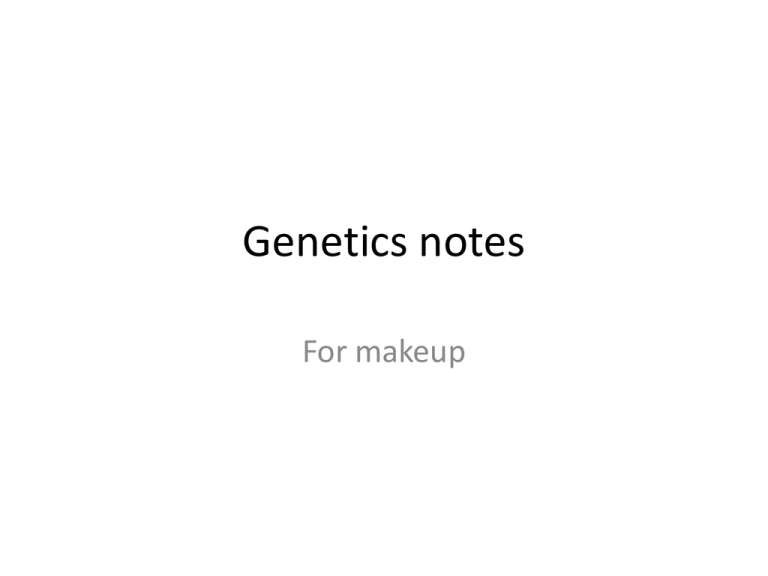
Genetics notes For makeup • A gene is a piece of DNA that directs a cell to make a certain protein. – Homozygous describes two alleles that are the same at a specific locus. – Heterozygous describes two alleles that are different at a specific locus. • A genotype refers to the makeup of a specific set of genes. • A phenotype is the physical expression of a trait. – A dominant allele is expressed as a phenotype when at least one allele is dominant. – A recessive allele is expressed as a phenotype only when two copies are present. – Dominant alleles are represented by uppercase letters; recessive alleles by lowercase letters. • • • • • • • Body cells are also called somatic cells. Germ cells develop into gametes Your body cells have 23 pairs of chromosomes Chromosome pairs 1-22 are autosomes Body cells are diploid; gametes are haploid. Mitosis makes more diploid cells. Meiosis makes haploid cells from diploid cells. – Traits are inherited as discrete units. – Organisms inherit two copies of each gene, one from each parent. – The two copies segregate during gamete formation. – The last two conclusions are called the law of segregation. • Crossing over is the exchange of chromosome segments between homologous chromosomes. – The farther apart two genes are located on a chromosome, the more likely they are to be separated by crossing over. – Genes located close together on a chromosome tend to be inherited together, which is called genetic linkage. • Genetic linkage allows the distance between two genes to be calculated


